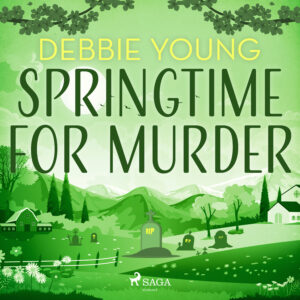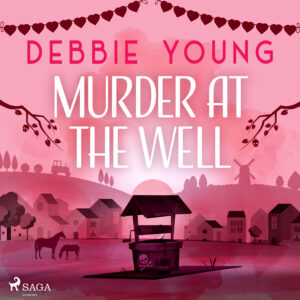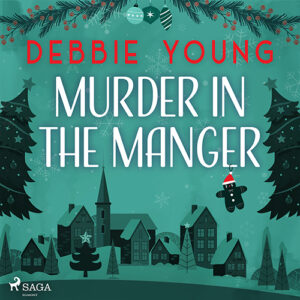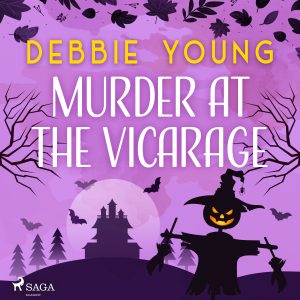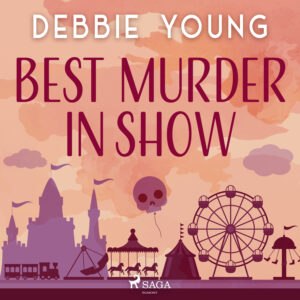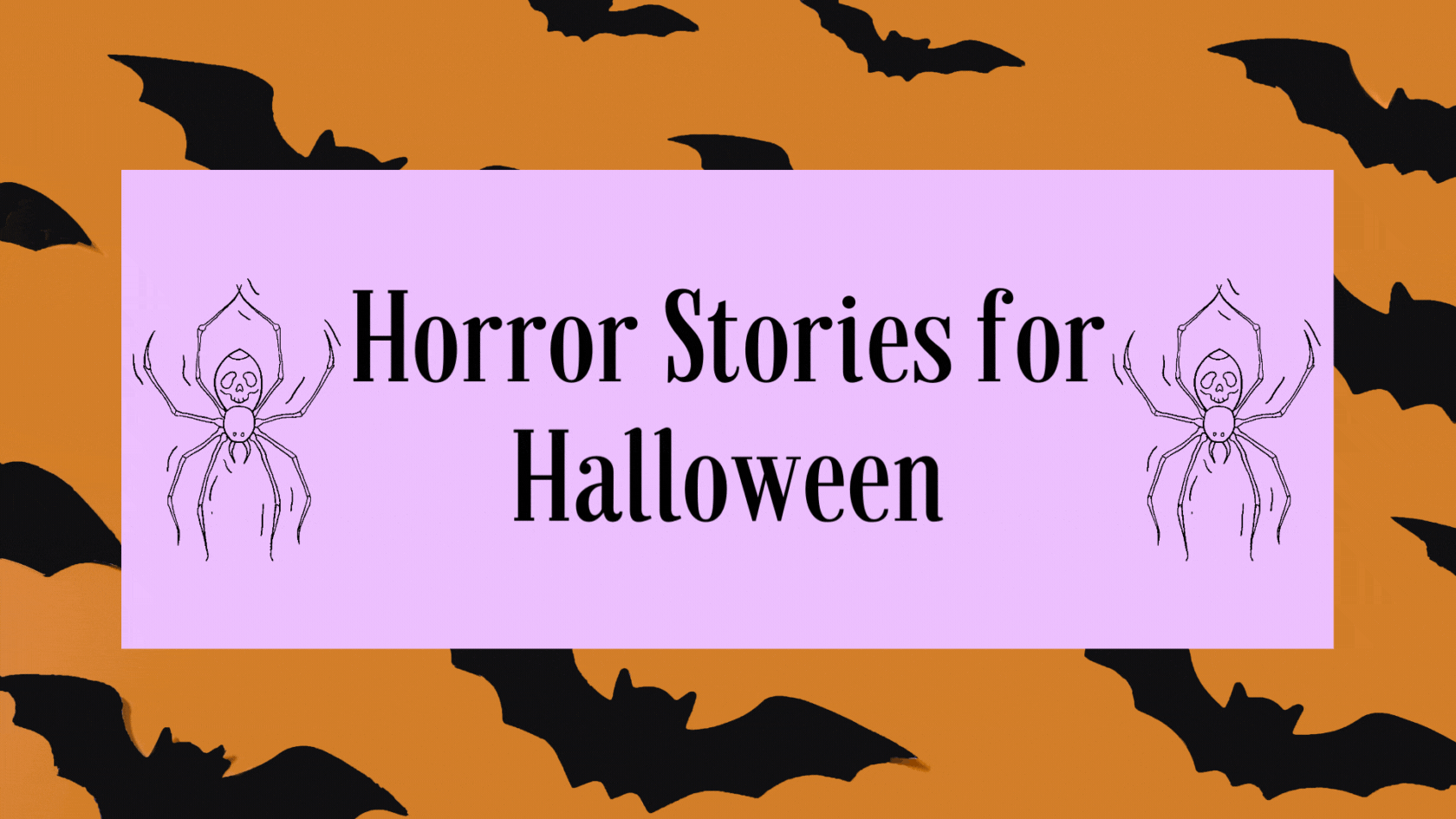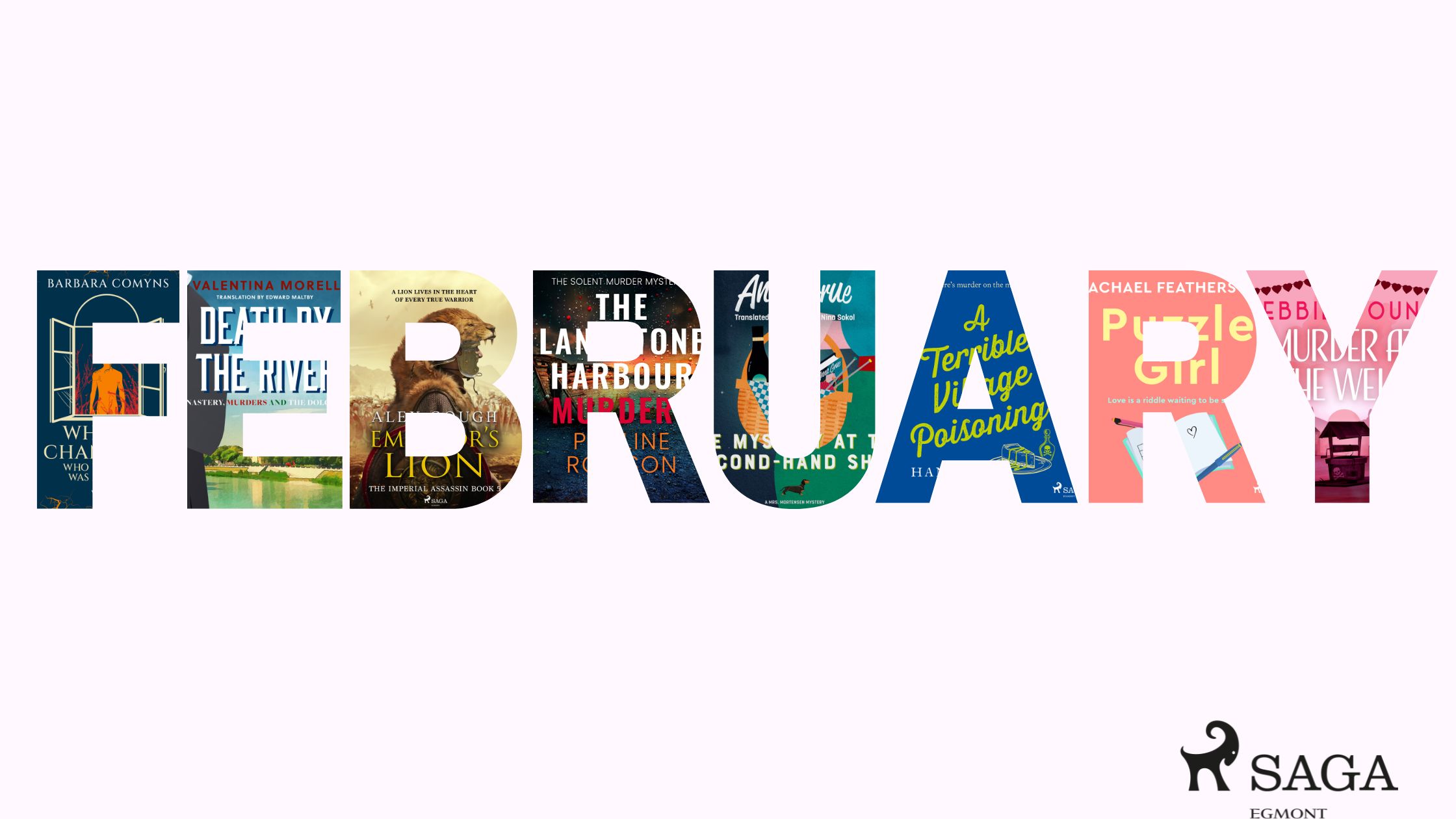Introducing Debbie Young
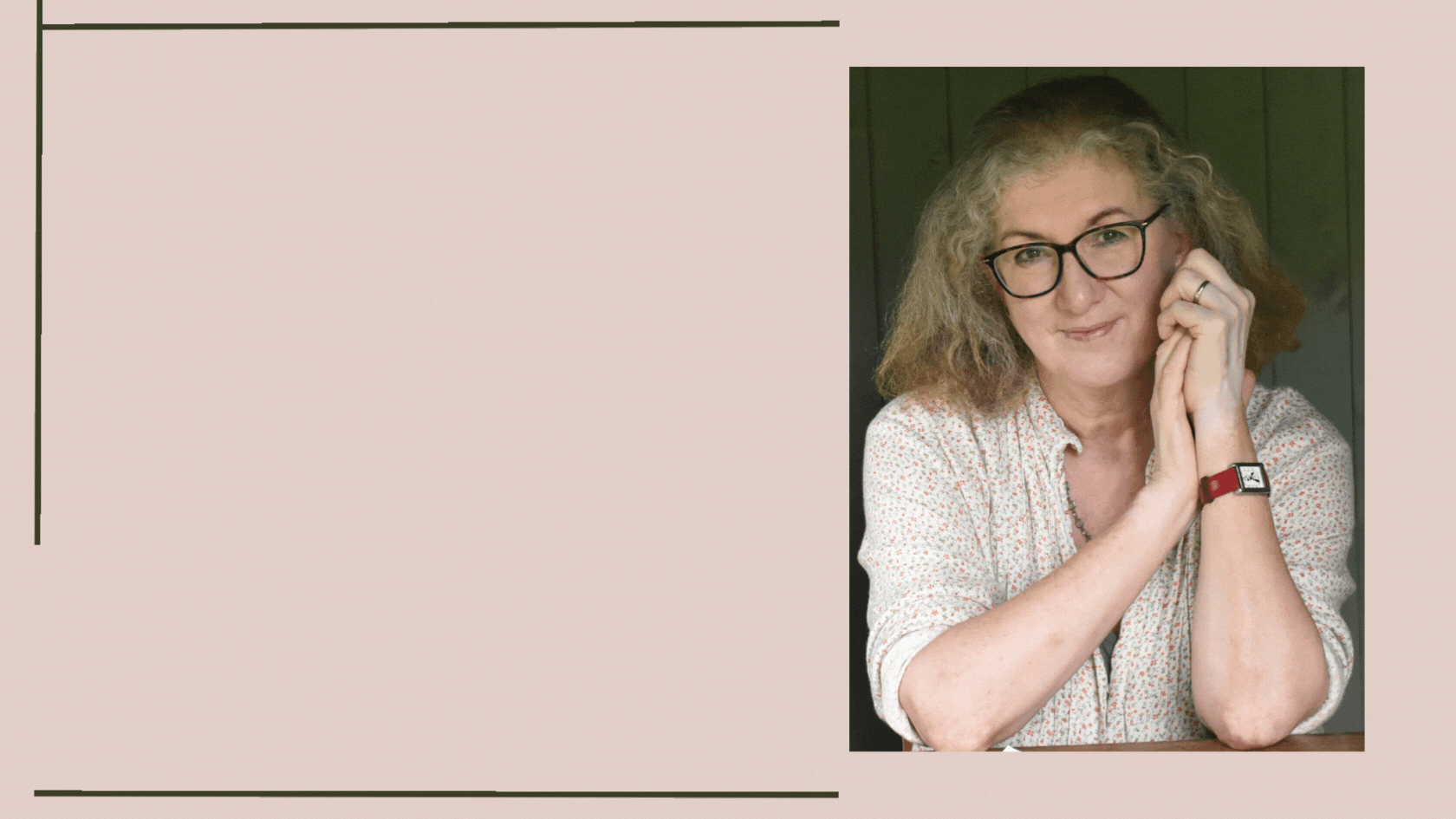
Debbie Young is a British author known for her cosy crime fiction. Her warm, witty, feel-good contemporary fiction is full of English humour, inspired by life in the Cotswold village which has been her home for over 30 years.
Her bestselling ‘Sophie Sayers Village Mystery’ series includes the trailblazing ‘Murder Your Darlings’ (now entitled ‘Murder at the Mill’), which was shortlisted for the Selfies Award for best independently published fiction in 2021.
Must-haves for your cosy crime lists and carousels, and here’s why –
- Over 4,400 reviews on Amazon across the series.
- Over 4,00 ratings on Goodreads across the series.
So far we have published the first four audiobooks in the series, with the last three set for release across Spring and Summer 2023.
We sat down with Debbie to ask her a little about her storytelling, self-publishing, and what it’s like to listen to her own books in audio.
Can you tell us about your background and how you became an author?
I wanted to be an author as soon as I was old enough to understand what the word meant. I have always written short stories and had some published in magazines in my twenties, but after completing a degree in English Literature at the University of York, I went into a commercial career for the sake of a regular salary, working in demanding jobs in journalism and public relations. Then on reaching a significant birthday, I decided that I ought to focus on my writing ambitions before time ran out! So I swapped my full-time job for a part-time post with a children’s reading charity, spending the rest of my time writing more short stories and some non-fiction, and I published three short story collections. A writing retreat on Ithaca (which inspired Sophie Sayers’ sixth adventure, “Murder at the Mill”) persuaded me that I should and could tackle the larger canvas of novels. Before writing my debut novel, “Best Murder in Show”, I outlined a series of seven novels that would run the course of a village year, from one summer to the next, for new arrival Sophie Sayers. I set to work, and it felt like a homecoming.
How has your experience been moving from self-publishing to more traditional publishing?
Self-publishing has been a wonderful experience, and I’ve learned so much about writing as well as publishing. I now have an enormous network of author friends all over the world, and I’ve gained a vast amount of technical knowledge. Being “discovered” by Saga Egmont and offered my first trade contract was an exciting moment for me, and although it seemed strange at first to lose the control I had over all parts of the publishing process – and the responsibility – it has also been liberating. I can now focus on writing, with fewer distractions, although I still do all I can to support the marketing of the publishers I’ve licensed various rights to. I will continue to self-publish any stories I write that don’t suit my trade publishers, if and when I can find time to write them – but now my trade contracts are my priority.
In your opinion, what are the benefits of experiencing your stories through audiobooks as opposed to print books?
Every reader has their preferred way of experiencing a story. Personally, I prefer reading in print, and I read a lot of ebooks too, because I take things in better that way. My mind tends to wander when I’m listening to things rather than reading them, or I fall asleep! But plenty of people prefer to listen to stories, which is of course the way in which stories were originally shared in ancient times, before mass literacy, so although audiobooks may seem like a modern, high-tech phenomenon, they are the natural successor to that historic precedent! It’s great that there is now so much choice for readers, so they can access literature in the way that suits them best.
Audiobooks also opens up new opportunities for people who either cannot access physical books for reasons of visual impairment or who do not have time to dedicate to reading as an isolated activity. Many people enjoy audiobooks when they’re driving, for example, and I do too (fortunately I manage to stay awake for those audiobooks!) I am thrilled that my books can now be enjoyed by those with visual impairment. My brother-in-law is registered blind and audiobooks have enriched his life so much. Only yesterday I had a lovely email from a blind man who had just discovered my books – without audio he couldn’t have read them. That made me very happy.
What was it like listening to your books in audio form, and what did you enjoy most about the audio narrations?
Considering that I am really familiar with every word of my stories, it surprised me how different the stories sounded when heard read aloud by someone else. Because the narrators of audiobooks are such brilliant professionals – proper voice artists and actors – they do a very much better job than I do when I give public readings of my work! They add a new dimension to the stories, and the first time I heard them, it felt as if I was listening to someone else’s stories – and I really enjoyed them!
The audiobook book covers are quite different from your print covers, were you happy with the outcome?
I think they’re terrific. I love the bold use of a single dominant colour, with a distinctively different one for each book in the series. The designs suggest just the right balance of mystery, intrigue and fun. They look great lined up together, and I’m really looking forward to seeing all seven books in the series in a row!
Can you tell us about the inspiration behind your Sophie Sayer Village Mystery series?
I’ve lived in a Cotswold village for over 30 years, and I’ve been very much involved in community life here, serving on lots of committees, such as the PTA, the Village Shop, the Village Hall, the Friends of St Mary’s (our local church), and most importantly, from Sophie’s perspective, I was for 13 years on the Village Show committee. It’s the kind of village that many city-dwellers don’t realise still exist – a place where everyone knows everybody else’s business, and we all look out for each other.
I wanted to write a mystery set in a relatively closed community, beloved of so many Golden Age of Detection writers like Agatha Christie and Dorothy L Sayers, and I also wanted to celebrate all that is good about my own village community. In our village show – the longest continually running one in the country (we’re very proud of that achievement!) – prizes are awarded for all kinds of things, from giant fruit and vegetables, from best crafts to best home-made wine, and there’s also a competitive carnival procession with floats bearing people in fancy dress. I was once telling an old schoolfriend, who had never been here, about the show, and he said, “It sounds like something out of Midsomer Murders. Do you ever have any murders there?” I replied, “No, but if we did, we’d have to give a prize for it.” The title for my first in series immediately sprang into my head: “Best Murder in Show”. I’ve since drawn on village traditions and activities from throughout the calendar year as the backdrop for each of the seven novels.
How do you develop the characters and plot in your cosy crime novels?
The characters grow naturally out of the circumstances in the stories, and they take shape in my head without much conscious effort. So much goes on in my unconscious – a writer never stops working, even when they’re asleep! Some of the characters seem to direct me to write about them, rather than my summoning them up. Billy, for example, was meant to only have a few lines, heckling Sophie and Hector in the tea-room in the first book, but he kept saying funny things, and Sophie and Hector quickly became very fond of him, so he has to feature in every story now, and I’ve developed his back story too, so he’s now a well-developed character rather than a minor player.
As to plot, it’s a much more conscious process. I plan the storyline in detail before I start writing, with a paragraph per chapter to guide me. However, as I’m writing, further developmental ideas arise organically, and I usually end up adding about another 10 chapters along the way. There are lots of “aha!” moments, when I think, “Oh, so THAT’s why they’ve done such and such!” I try not to start writing until the bones of the plot are clear in my head, but I’m open to interruptions and diversions from my unconscious along the way, as they deepen the story so much.
Can you discuss the research that goes into creating the village setting and its inhabitants?
Because I’ve lived in a Cotswold village for so long, and been so involved in village life, my research is for the most part already done! For the most part, I am writing about what I know very well, my private life driving and informing the stories, although I’m careful to make them pure fiction – all the characters and situations are pure invention. These days villagers suggest new storylines to me, eg in the last couple of years I’ve taken up bell ringing at our parish church, and my fellow bell ringers keep suggesting new ways to murder people with a church bell! So the only research I need to do is when I want to write about a topic that I haven’t experienced in the village at first hand, eg grave digging, which features in the opening chapters of “Springtime for Murder”. It turned out to be a fascinating topic – digging graves is a more highly skilled art than I had realised!
How do you balance writing a series while keeping each story fresh and unique?
I’m very conscious to avoid falling into the trap of writing the same story over and over again, so I make a point of having clear differences in the season in which each story takes place, and I also introduce new characters at the heart of every mystery. I also have a broader plot arc for the whole series, so that anyone reading the whole set will gain added insights and enjoyment. The relationship between Sophie and Hector is constantly evolving, and I also reveal backstories about Sophie, Hector and other key characters, so that readers will get to know and understand them more deeply as the series progresses.
Why do you think there’s been a spike in Cosy Crime popularity?
We live in uncertain, troubling times, and cosy crime allows the reader to escape into a more ideal and interesting world governed by unfailing fairness and justice. Cosy crime is a real comfort read, with plenty of entertainment and humour wrapped around the central crime plot, so they provide comic relief as well as a diverting intellectual puzzle. The crimes featured are not the kind readers will lose sleep over – they’re never gory or disturbing – and ironically the world of cosy crime stories usually feels very safe. Readers often say to me they’d like to live in Wendlebury Barrow themselves! There’s a kindness and gentle humanity woven into the best cosy crime stories, and we can never have too much of that.
Social Media Links
Website: www.authordebbieyoung.com
Facebook: www.facebook.com/AuthorDebbieYoung
Twitter: www.twitter.com/DebbieYoungBN
Instagram: www.instagram.com/debbieyoungauthor
Goodreads: https://www.goodreads.com/author/show/6556936.Debbie_Young
Photo credit, Laura Young
See the full list of metadata for the books by Debbie Young by downloading below.
When Bunny Carter, the old lady from the Manor House, is discovered in an open grave, Sophie Sayers is sure it’s a case of foul play. But when it comes to suspects, she’s spoiled for choice.
One of Bunny’s squabbling children from three different husbands?
Petunia Lot from the Cats Prevention charity, always angling for a legacy?
All these and more had motive and opportunity.
But who is to blame? And can Sophie and her boyfriend, village bookseller Hector Munro, stop them before they strike again?
A romantic Valentine’s evening at The Bluebird turns into a murder mystery when a dead body plummets to the bottom of the village well.
There are no witnesses, but surely in a community where everyone knows each other’s business, the murderer can’t stay hidden for long?
Sophie doesn’t think so, and she’s on the case, determined to restore peace to the idyllic Cotswold village once more.
Sophie Sayers’ plans for a cosy English country Christmas are quickly brought to an end when her ex-boyfriend storms onto the scene. And things are about to get messier when a baby, abandoned in the manger, disappears in plain sight.
Before long, the whole village stands accused of murder.
But Sophie knows there’s one man she most definitely suspects. Can she uncover the truth?
As Halloween approaches in the Cotswold village of Wendlebury Barrow, Sophie Sayers, new to the village, is suspicious of the fierce new vicar and his ban on the villagers’ seasonal celebrations.
Especially when he plans to replace them with a traditional Guy Fawkes’ Night party, and invites everyone to bring a guy (scarecrow) to burn on his giant bonfire.
Sophie thinks the vicar’s not the only one with dark secrets to hide. What about her boss, the beguiling bookseller, Hector Munro? Whose body will be found outside his village bookshop? Not to mention the one secretly buried beneath the vicar’s bonfire…
Just as Sophie had been starting to feel at home in Wendlebury, she must call on all her inner resources and trust her instincts to save the day before anyone else can come to harm – and to get Hector back on her side.
When a dead body appears on a carnival float at the village show, Sophie Sayers knows that a case of murder in plain sight ought to be easy to solve.
But why do none of the villagers agree? And what dark secrets are they hiding? As she tries to investigate the crime, it’s clear that someone is desperately trying to stop her from unmasking the killer.
Can Sophie unearth the clues before anyone else comes to harm?
For more information about these titles, or our full English catalogue contact Nadia on – nadia.lamond@sagaegmont.com or simply book a meeting.


